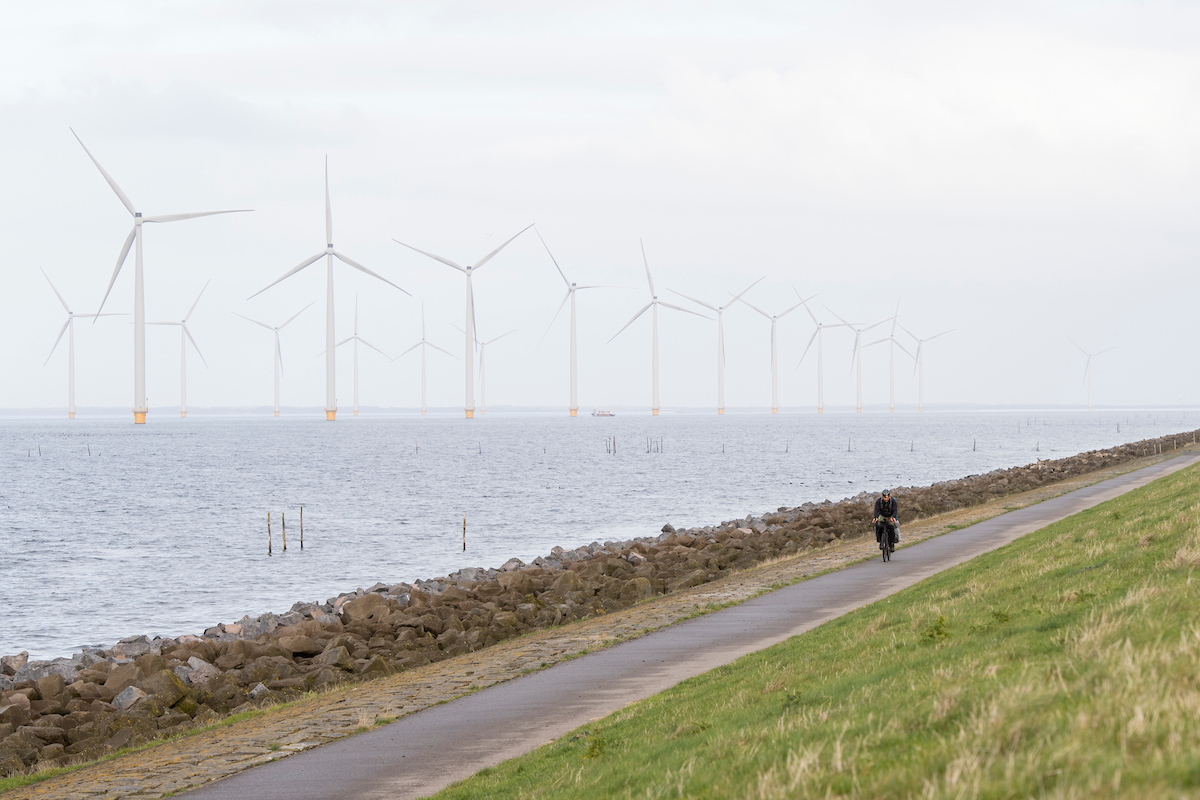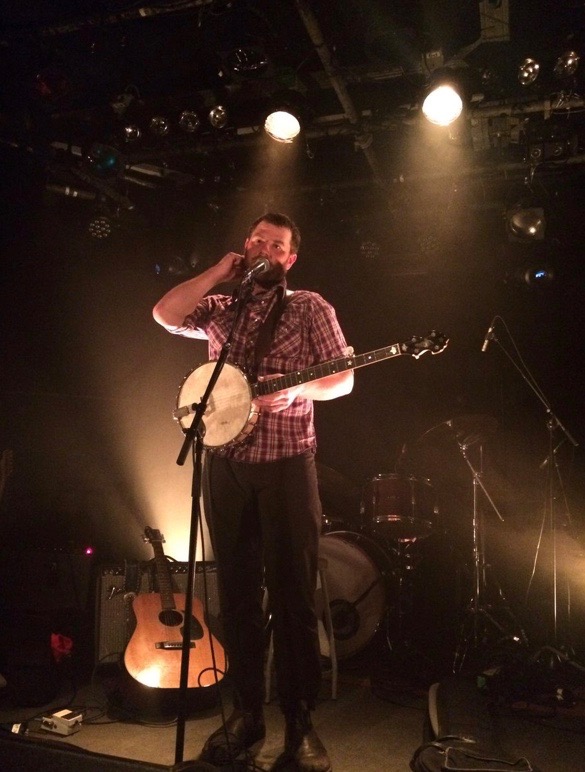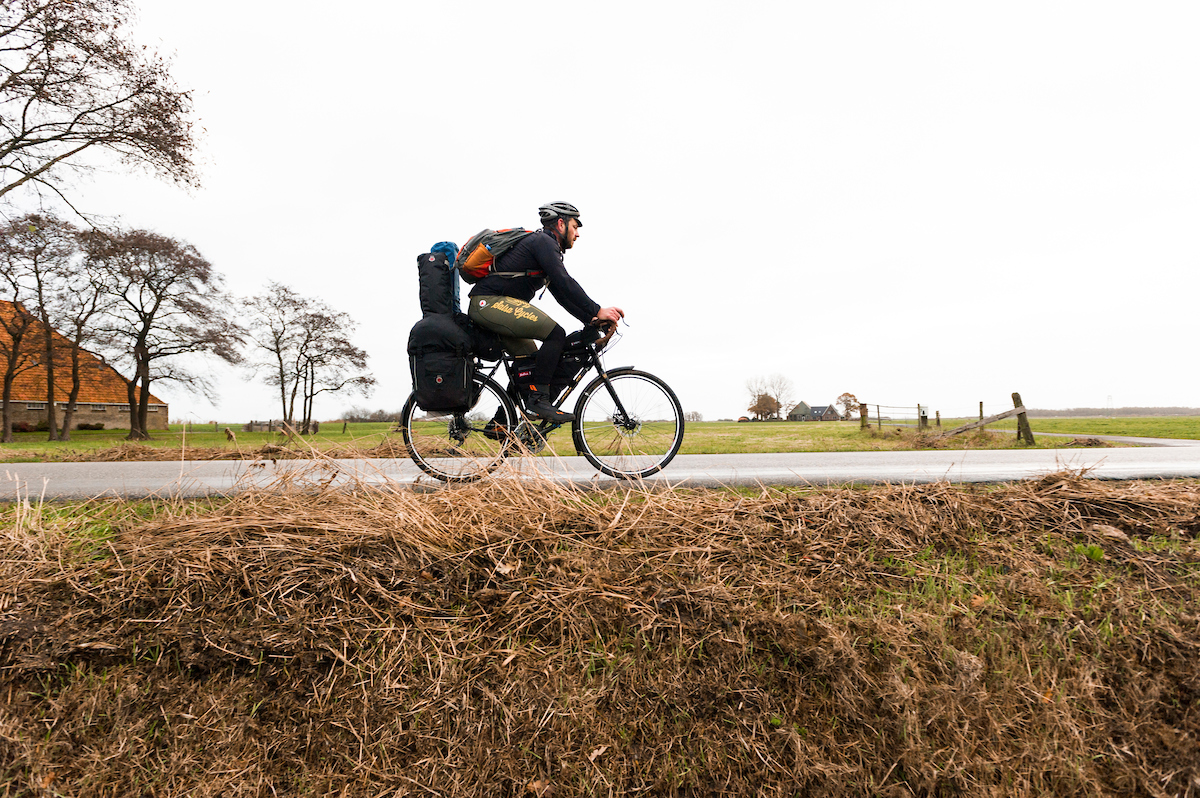To the Edges We Must Run
Ben Weaver on the trouble with lionizing artists' struggles, with a call for boldness in the face of want, solidarity with the land and each other, and seeking brave solutions at the edges, rather than swimming comfortably in the mainstream

A stranger came to town. Down the frozen roads. Barely made it up the hill. She left early the next morning. Some say they planned it all along. It’s true, there are so many different kinds of dark. Everybody is wondering what will end up in the fire.
I had flown across the pond and was riding to shows in the Netherlands. Hadn’t been over there for years, and not since making the choice to tour by bicycle.
The house managers and sound engineers greeted me with strange looks, their eyes spinning around in their sockets as I answered questions about how far I had ridden that day, and where I was headed to next. Typical days were 100 miles; one ended up at almost 130. I had performances every night. Some of the shows were co-bills, usually shared with other American acts. I noticed that many of these bands had a pattern of sitting in the dressing rooms huddled over their screens. They didn’t venture out much.
It rained five out of the 10 days I was there. There was a lot of wind. Weather makes me feel alive. I had no complaints. The ocean had tongues all white and frothy, and birds were caught in its teeth.

The other night, I watched a documentary about Levon Helm. He was falling to pieces—in terrible health, losing his voice. Strangely, he seemed to have a sort of pride about it all. The film was titled, Ain’t in It for My Health.
Once upon a time, there were Chinese monks living in the sides of mountains, subsisting off fog and pine needles. These days, artists seem increasingly unhealthy, making less and less relevant work the more “successful” they get. There are some exceptions, but I have heard Patti Smith say nearly these exact words about herself. The business of art has made a killing from artists killing themselves, which, in turn, has established an unquestioned narrative that art must always come from some type of sacrifice and tragedy in order to qualify as good. Many of us are forfeiting our own personal power for stories that don’t serve us.
In the mainstream, the artist ends up serving businesses and institutions— serving the gatekeepers rather than the greater community art is intended to serve. Bourgeois romance art prevails, while a few rare pearls toil away in darkness.This is how narratives, like “one day it will be worth it,” and “the harder the struggle, the better the work,” have been built. We justify the sacrifices along the way, digging a giant black hole of collective waiting, longing, and artistic resentment.
The irony is that the “artist’s struggle” is never the struggle to make art. No one but the artists themselves stops them from doing the work. The artist’s struggle is about basic survival—food and shelter. It’s the same thing everyone but the 1% is struggling for, however the artist is elevated for their efforts, while the panhandlers and hustlers are scoffed at. A smart artist figures out that time is the real freedom, their most powerful tool for creation. Artists learn that if you don’t earn money from your work, then you can’t buy back the time it takes to create it. This means you end up selling your time to someone else, inevitably doing their work instead of your own. One of my favorite printers, Amos Kennedy, says, a poor artist is a bad artist.
Change never comes from the middle. It comes from out on the edges. Artists are limber in spirit and capable of running out to these edges. They are the messengers, visionaries, and listeners, the ones still uncivilized enough to hear the rivers and woodpeckers. Their job is not to restore in matters of architecture, but to create anew.
By romanticizing the artist’s struggle, institutions have led the masses to perpetuate a hierarchy—lionizing them, and thereby dissociating the artist from the very people they speak for and represent. In the short term, this is popularity, the veils of fame and stardom. But in the long term, this elevation is precisely what leaves the artist chained, edgeless, codependent, self-obsessed and out of shape. Artists are left standing at the river’s edge, stuck staring down into their own reflection, unable to engage with the communities they are meant to lead across the river.
In criticizing our current civilization, there are plenty of fingers to point. There is no shortage of blame to go around, but in talking about change, it is not enough merely to be against something. We have to imagine new realms to replace the current tyranny. Then, we have to go out and make them from the rubble and old night. The intent of the plunderers is to confuse, overwhelm, and exhaust. For this very reason, we must not respond with empty rhetoric. Rather than a new system, we need a new mythology. Rather than rearranging the same words to make statements about what we stand for, we must imagine and create something that altogether replaces those statements—something that smells like rose hips, beeswax, apple blossoms, wet stones and black dirt.
There are many times when I ride through town, particularly during rush hour, and the streets are clogged with cars waiting at stoplights. As I fly past them, I can’t help but see a metaphor. The artist with a strong body, sharp mind, and balanced will does not get stuck in line with the rest of the lemmings, and is thus able to ride out ahead.
Change never comes from the middle. It comes from out on the edges. Artists are limber in spirit and capable of running out to these edges, where new stories and relationships await. Artists are the messengers, visionaries, and listeners, the ones still uncivilized enough to hear the rivers and woodpeckers. Their job is not to restore in matters of architecture, but to create anew.
Rather than blame the darkness for our problems, I suggest we look straight up into it, through the smoke, and remember that darkness is where the stars come alive. We must not forfeit the power inherently carried within each of us, like an ocean, a storm, or a river. We own our time, our futures, our actions, and our bodies. These are our tools. We must use them to imagine, build, and live on this planet in a way that does not destroy the very things we need in order to continue living here.
After the stranger left town. Fading down the frozen roads. A note was found carved into the fountain:“You are already doing the work you were going to do. Do not question it now. The swirling in your guts is merely the urgency of the work speaking through you. Hold tight, seek the truth, go with light.”

Related links and information: I Would Rather Be A Buffalo is Ben’s most recent record, from which you can listen to a selection of songs (or buy) here: http://www.benweaver.net/listen/. Follow him on Instagram, Facebook and Twitter @benweavermusic. Visit Ben’s website: http://www.benweaver.net for more information.